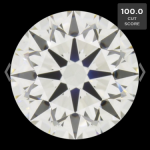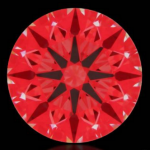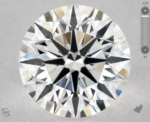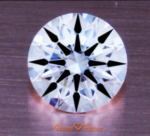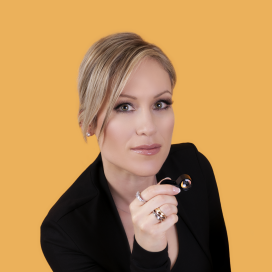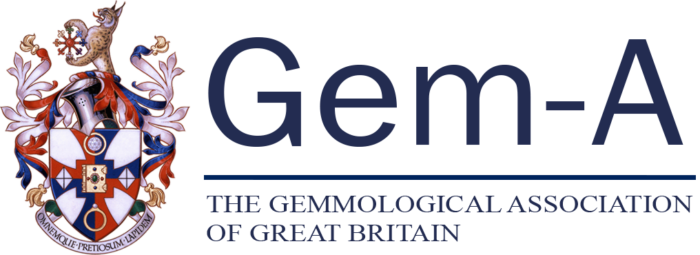How To Buy Princess Cut Diamonds – Light Performance and 4 C’s
Princess cut diamonds are the second most popular diamond shape after the round brilliant cut. Princess diamonds offer similar brilliance to the round, but offer a more modern square-shaped look for women that want something that isn’t so traditional. When it comes to buying princess cut diamonds online, it can get pretty tricky. Why? Because some princess cut diamonds are perfect “squares” whereas other princess cut diamonds are more elongated like “rectangles”. It depends on your preference, but the industry seems to prefer a more perfect square shaped diamond. Take a look at some of the more popular length/width ratios for princess cut diamonds below:

To ensure a perfect square outline when set, it is best to choose a square or very close to square length/width ratio: 0.95 – 1.10. If a rectangular shape is preferred, a ratio of 1.50 – 2.00 is recommended.
How To Buy Princess Cut Diamonds: Recommended Proportions
- Cut: AGS Ideal (there is no cut grade for GIA fancy shapes)
- Color: D – I for White Metal, J-K for Yellow Gold
- Clarity: SI1 or better
- Depth Percentage: 72 – 78%
- Table: 60 – 75%
- Crown Angle: 34° – 45°
- Pavilion Angle: 39° – 42°
- Length/Width Ration: 1.00 – 1.01 for ideal, or less than 1.05
- Recommended Lab: AGS or GIA
Fancy shaped diamonds (this includes Princess cuts) do not return light as well as ideal cut round brilliant diamonds.Therefore you cannot just plug in suggested diamond proportions and expect to purchase a princess cut diamond strictly off of paper alone. You may purchase what looks like a very well cut GIA graded princess cut diamond with perfect proportions (as suggested above) but it may STILL turn out to be a poor performing diamond. Why? Because suggested mathematical proportions can only guide you. The rest is up to light reflector technology (ASET and Ideal-scope) to tell the rest of the story. Many diamond retailers are uneducated about the intricacies of a diamond’s cut and light performance especially when it comes to a fancy shaped diamond. You simply cannot purchase a fancy shaped diamond without adequate light reflector technology. If you do, you will be at risk of purchasing a poor-performing diamond, in other words, one that looks dark, dead and dull.
Princess Cut Diamonds – Their History and Cutting
The Princess cut diamond was originally created in the 1960’s. This diamond shape is popular due to it’s high degree of light return coupled with its modern square or rectangular shape. They may have either 50 facets (21 crown, 4 girdle, 25 pavilion) or 58 facets (21 crown, 4 girdle, 33 pavilion); all depending on how the pavilion is cut. Essentially, the number of facets on the bottom of the diamond (pavilion) influences the character of its performance. The princess diamond cut is most commonly square shaped with a length to width ratio of about 1.05 or less. The most optimal ratio (length/width) is between 1.00 and 1.02.
It is best to choose a princess cut diamond with a very thin to slightly thick girdle thickness because the vulnerable corners can be chipped if the girdle is too thin. Additionally, the pointed corners of Princess diamonds should be protected by prongs. Some princess cuts have chamfered (tiny extra facet to improve durability) corners to protect the points from chipping.
Princess cut diamonds tend to have the smallest “face up” position than other diamond shapes of the same weight as most of the diamond carat weight is in the pavilion. Thus, a princess cut with the same width as the diameter of a round brilliant diamond will weight more in carat weight as it has four corners what would otherwise have been removed in order to form the round brilliant shape. This is why princess cuts may have greater total depth in order for it to maximize its brilliance. A well cut 1ct princess will measure approximately 5.6mm as compared to a well cut 1 ct round brilliant which will typically measure approximately 6.5mm.
How To Buy A Princess Cut Diamond – Get More For Your Money With A Princess Cut Diamond
Princess cut diamonds tend to be a little cheaper than a round brilliant cut diamond due to its weight retention. A princess cut typically yields anywhere from 65-80% of weight from the rough diamond crystal. Compare this to 50% for an average round brilliant.
Princess Cut Diamond Cut Grades – What You Should Know
Before 2005, there was no standard cut grade for princess-cut shapes. This allowed diamond cutters to take advantage of consumers ignorance and resulted in them cutting diamonds for maximum carat weight retention in order for them to increase their profits. That is why most of the princess cut diamonds available on the market today have varying length to width ratios as well as larger depth and wider table proportions. For more information, please read why there are so few ideal cut princess cut diamonds in the marketplace: https://www.whiteflash.com/about-diamonds/diamond-education/why-are-there-so-few-ideal-cut-princess-diamonds-on-the-market-1267.htm
However, it wasn’t until 2005 that AGS introduced the industry’s first ever scientific cut grade based on actual light performance through human analysis and computer ray-tracing. AGS triple “0” ideal princess cut diamonds adhere to stringent cut standards in order for them to be graded in this category with the majority of princess cut diamonds meeting average cut grade standards. Do keep in mind that the GIA still doesn’t have an established cut grade for fancy shaped diamonds, including princess cut diamonds.
If cut is the most important “C”, then you’ll want to focus your attention to the cut proportions with a princess cut diamond. If you want maximum brilliance and light reflection, it is best to focus on ideal or near ideal proportioned stones. Finding a princess cut with the AGS triple “0” cut grade is extremely rare as they are outside of the shapes traditional parameters and yield less material from the original rough diamond crystal. These diamonds have higher crown-heights and smaller tables as this has shown to be the best proportions for optimized light performance.
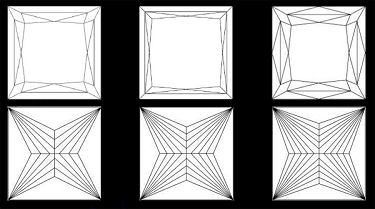
From the left: 2, 3, and 4 chevrons in a princess cut
How To Buy Princess Cut Diamonds – Depth, Table, Color, and Clarity Guidelines
Princess diamonds with a depth of 58-76% and a table of 58-77% (smaller depth and table percentages) are preferred but are more difficult to find (because most diamond cutters choose to retain more carat weight, resulting in an average-poorly cut stone; small in length and width for the same carat weight). Of course, all ideal cut diamonds will always result in more diamond waste required in the cutting process, and therefore there is a premium cost associated with this rare cut.
Since the corners of a princess cut diamond tend to retain more color, it is recommended to stay a little higher in color grade. Polish and symmetry should be at least “good” as these minor finish grades are not significant factors in affecting the appearance of a princess cut diamond.
Again, if you are looking for an easy way to purchase ideal cut “eye-clean” princess cut diamonds online, I recommend using The Diamond Genie to help you in your search. As always, if you have any questions at all, feel free to contact me directly.
Where To Buy Princess Cut Diamonds
ODBA recommends Whiteflash and Brian Gavin Diamonds for super-ideal princess cut diamonds. These diamonds are priced at a premium because they are branded and already fully evaluated for top light performance and brilliance to ensure you get only the most sparkling beautiful princess cut diamond. You can trust that these diamonds offer the best of the best in terms of overall cut grade and brilliance.
ODBA also recommends: Zoara, Ritani and James Allen. Please contact me for assistance in choosing a diamond from these retailers as a certain expertise is needed to fully evaluate a princess if no ASET image or Ideal-Scope image is present.
Happy Diamond Buying!
Hey.You Want Ideal Cut Diamonds?
You've got it.
Join ODBA's Diamond Deal Friday and get handpicked diamonds every week from me to you.
No consultation required. Subscribe now!
ODBA Recommends
You May Also Like



